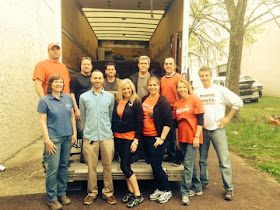The history of Milliken v. Jacono is well-known to Realtors®. A highly-publicized murder-suicide occurred on the property, and the estate sold the property to the Jaconos (yes, the estate did disclose the murder-suicide). Seven months later, the Jaconos were relocated. When they listed the property for sale, they spoke with their listing agent, who checked with both the PAR Legal Hotline and the State Real Estate Commission. In both cases, the Jaconos were told that the murder-suicide was not a condition “of” the property and disclosure was not required. The listing agent still recommended disclosing the murder-suicide, but the Jaconos declined the advice.
Milliken was moving from California to Pennsylvania. She found this house via the Internet, and took the necessary steps to buy it. Prior to settlement, Milliken reviewed the Sellers’ Disclosure Statement, received (but did not read) the homeowners’ association documents, and received and reviewed the title report that disclosed the Jaconos’ bought the property from an estate. Milliken did not undertake any additional investigation about the history of the property. After she moved in to the property, Milliken experienced a “cherry pie” moment, learning about the murder-suicide from a neighbor.
The Supreme Court’s ruling contained several important points. First, the Court commented that using a disclosure form that revealed more information about a property than the law required does not create additional mandatory disclosure requirements. (Yes, the PAR Sellers’ Disclosure Form was the one!) Second, the Court stated that it was “not ready to accept that [a psychological stigma] constitutes a material defect.” The Court observed that requiring quantification of the psychological impact of various traumatizing events would be a “Sisyphean task.”
Third, the Court recognized that psychologically traumatic events do not result in defects to the structure of the house; they do not affect the quality of the real estate. Fourth, the Court noted that it would be nearly impossible to assign a monetary value to psychological stigma.
Lastly, and importantly for buyers’ agents, the murder-suicide was absolutely not a latent event. It was widely publicized in the local media and on the Internet; and was a well-known event within the neighborhood. The doctrine of caveat emptor still survives and places the responsibility on the buyers to ensure the property they are buying meets their needs. In the words of the Pennsylvania Supreme Court, “Purely psychological stigmas are not material defects of property that sellers must disclose to buyers.” It doesn’t get much clearer than that!
By: Brett Woodburn, Esq.






